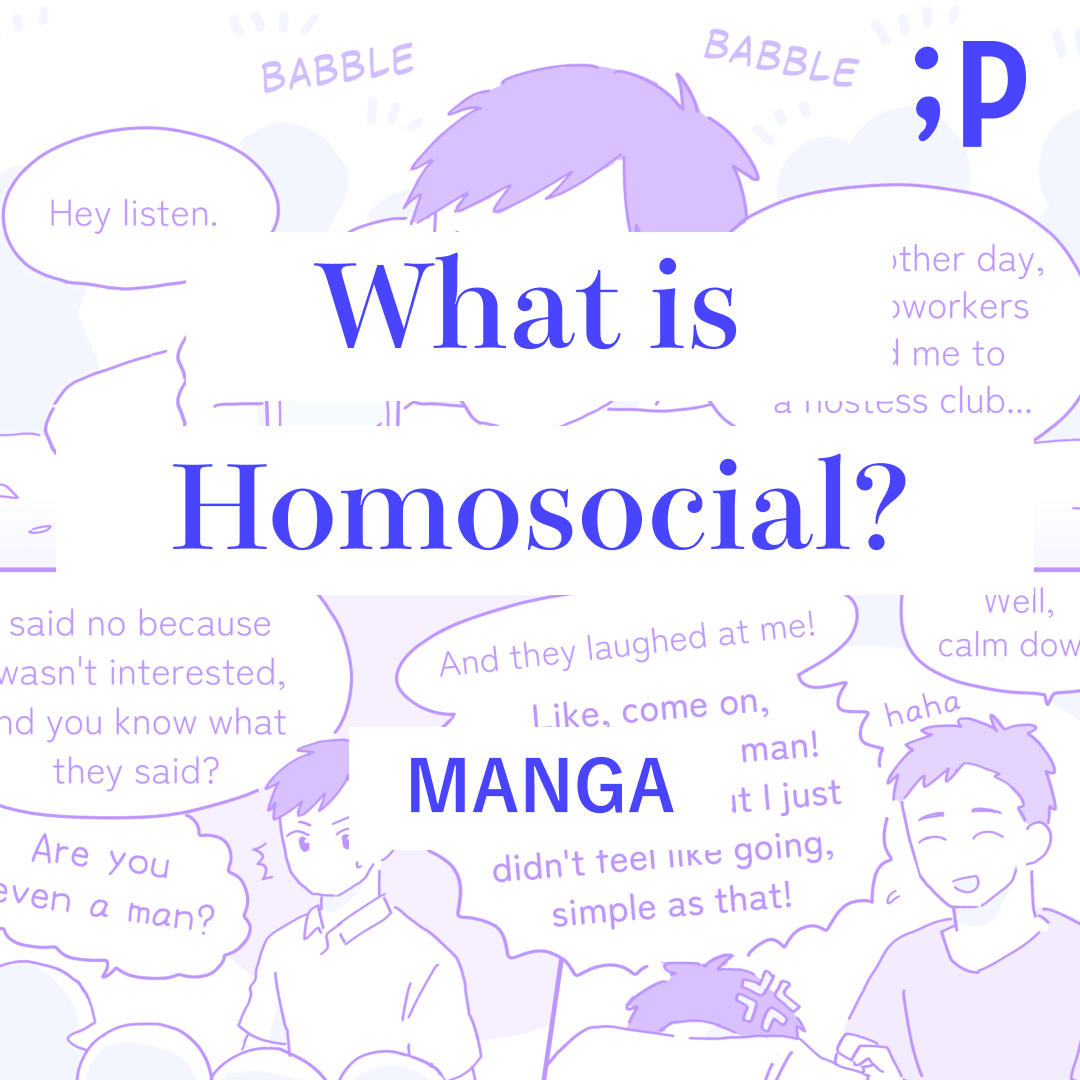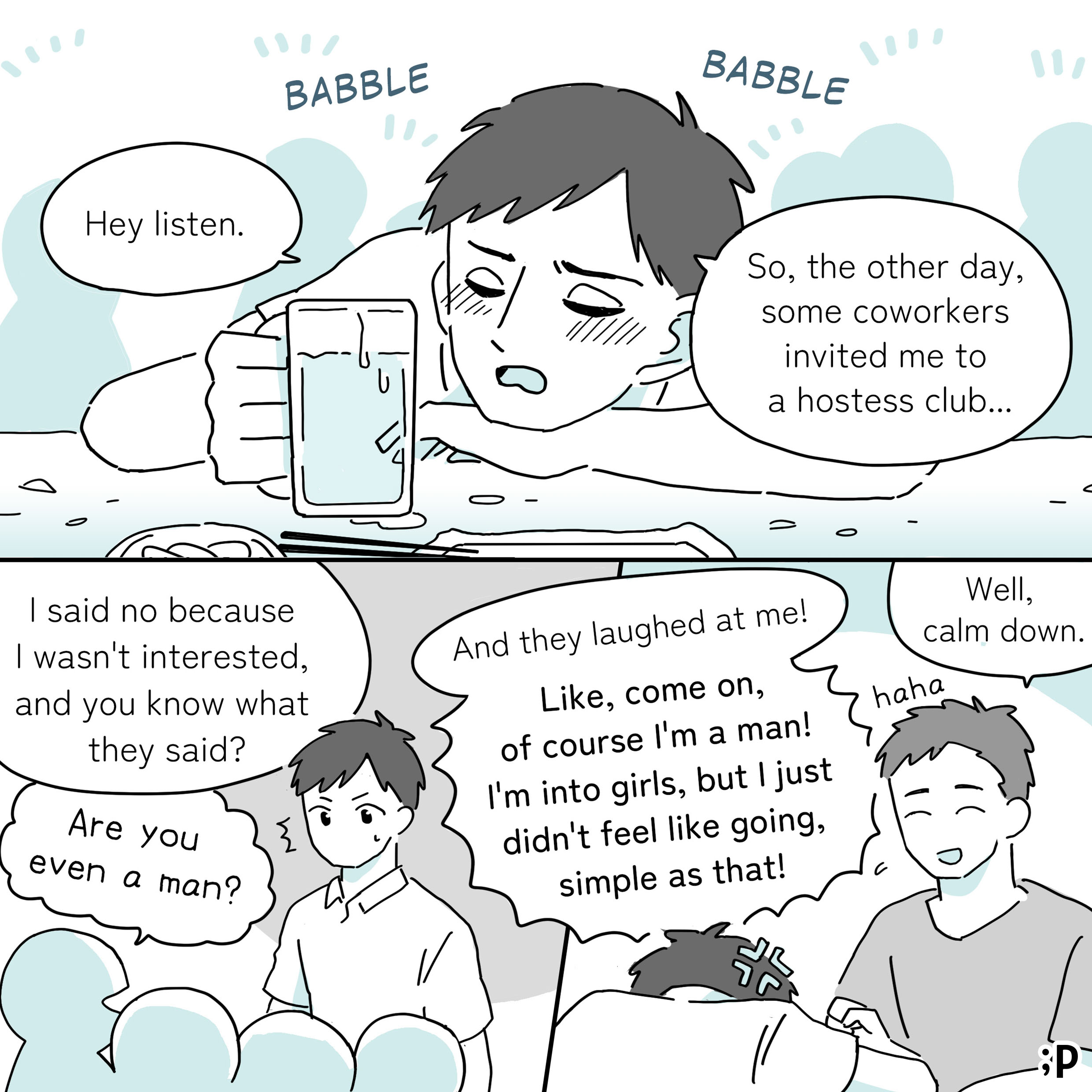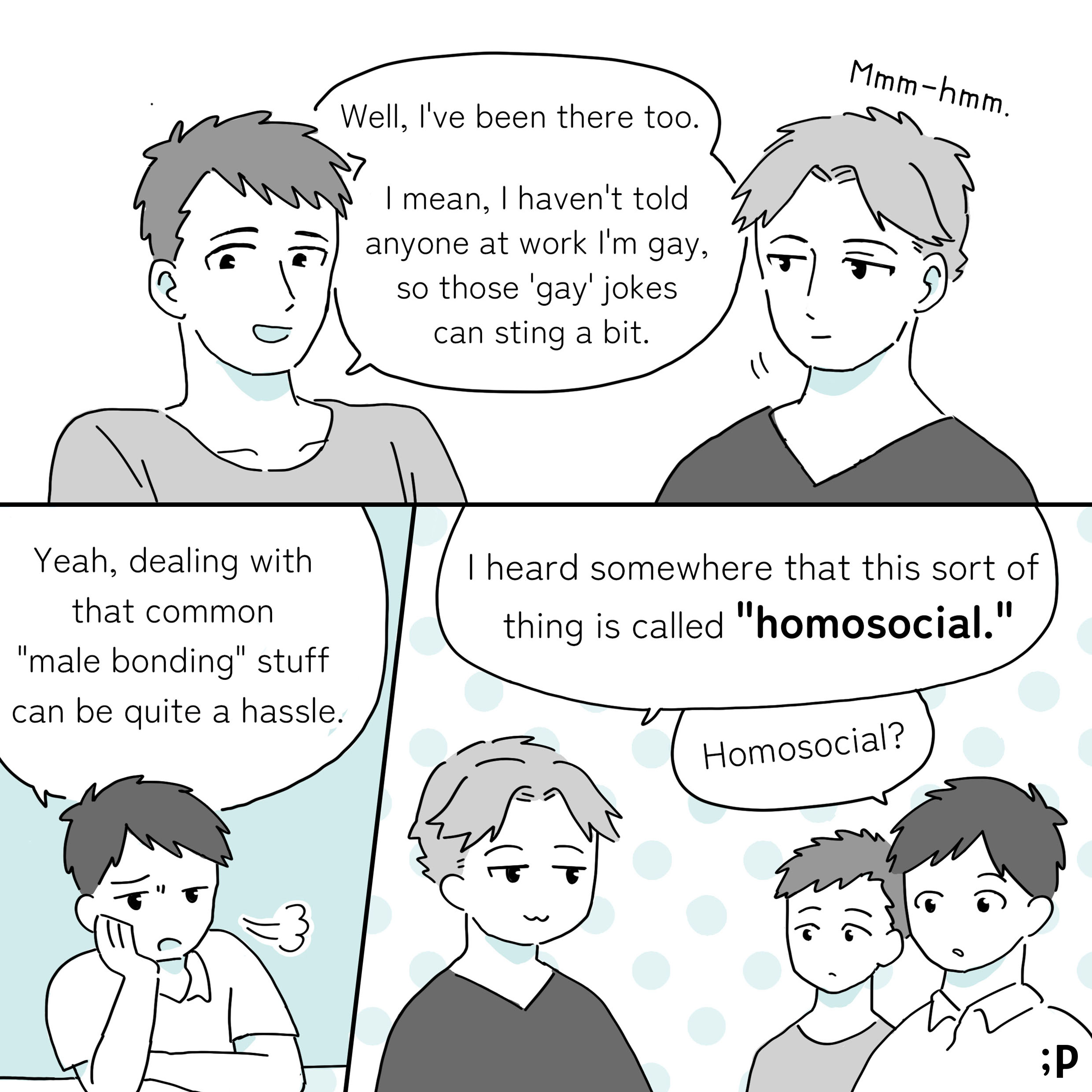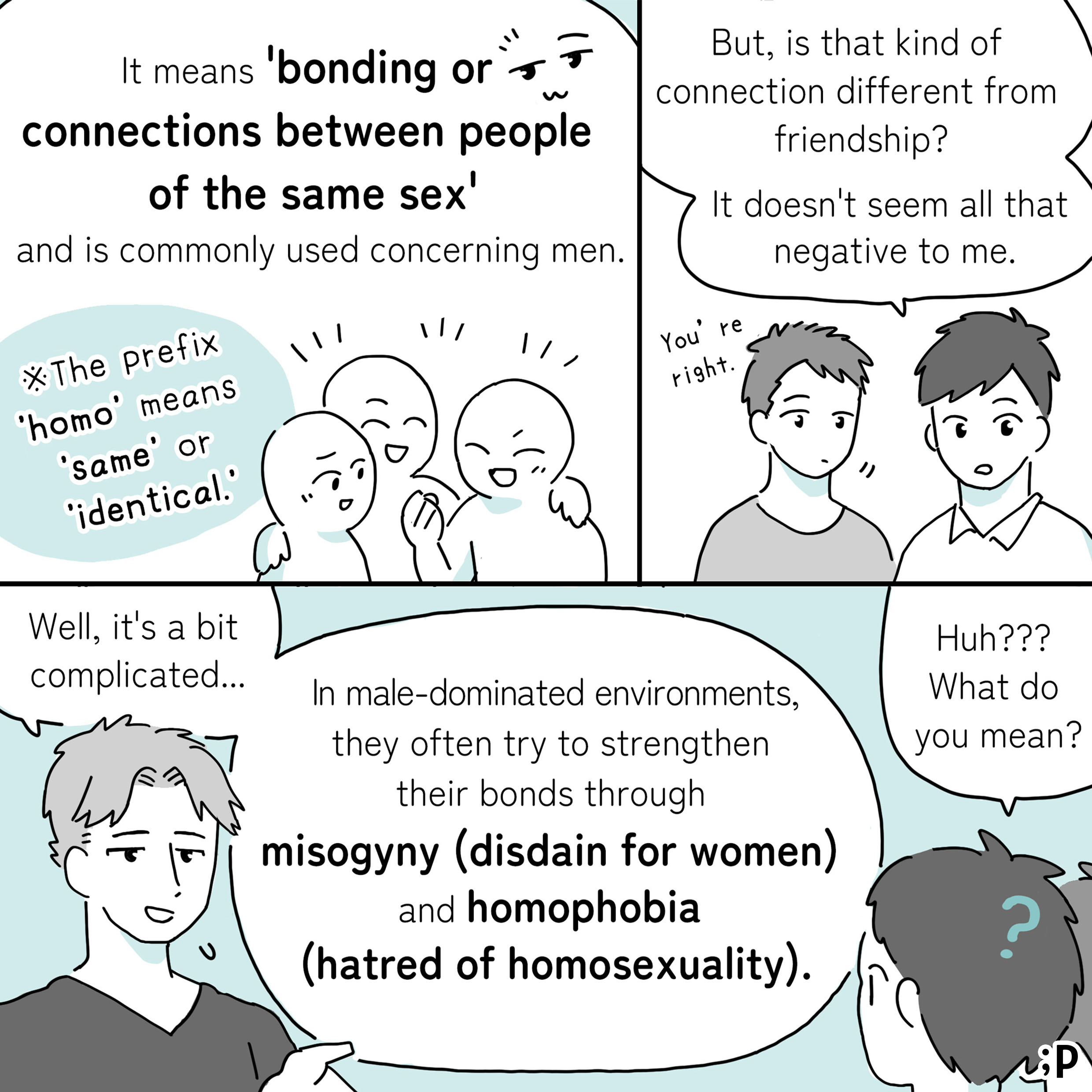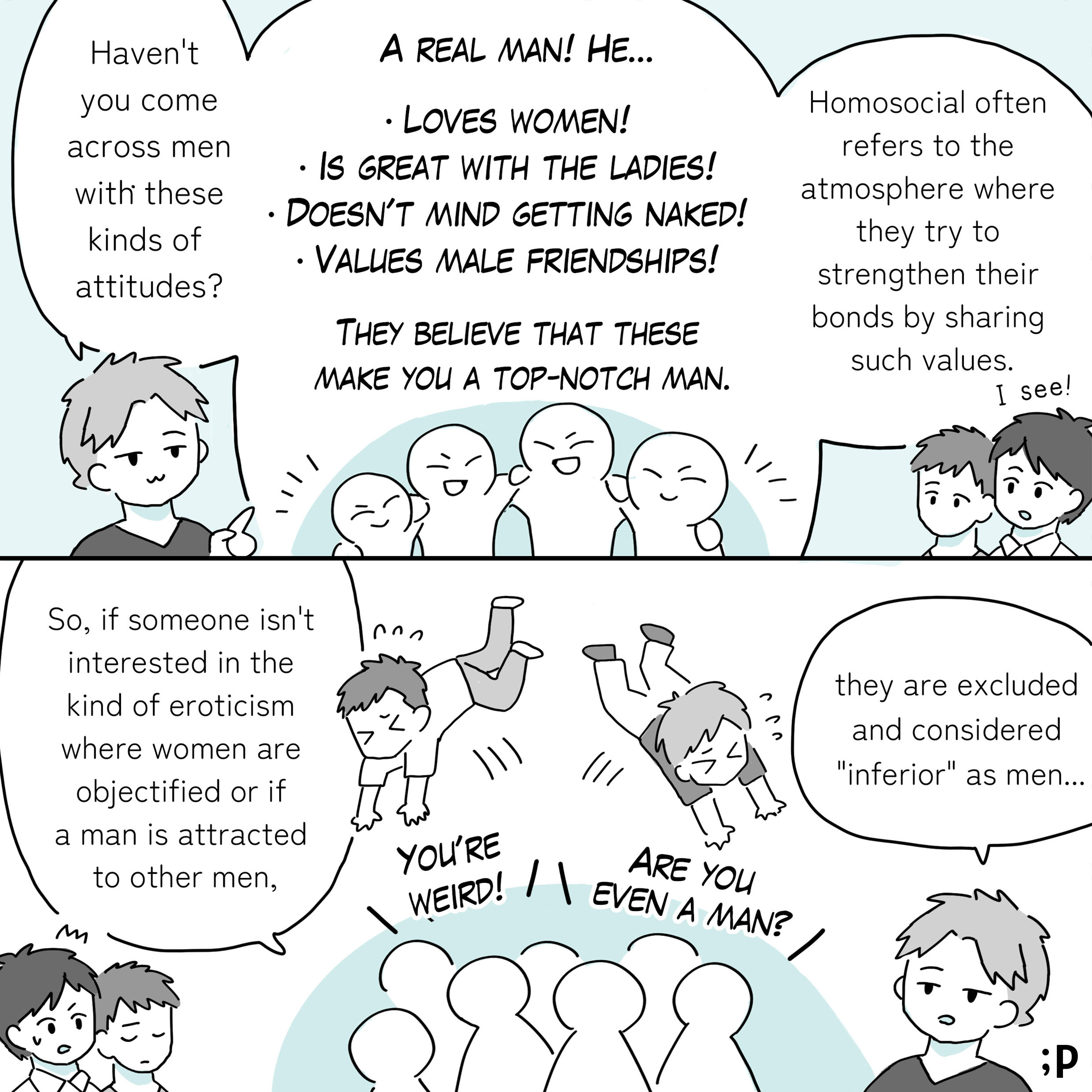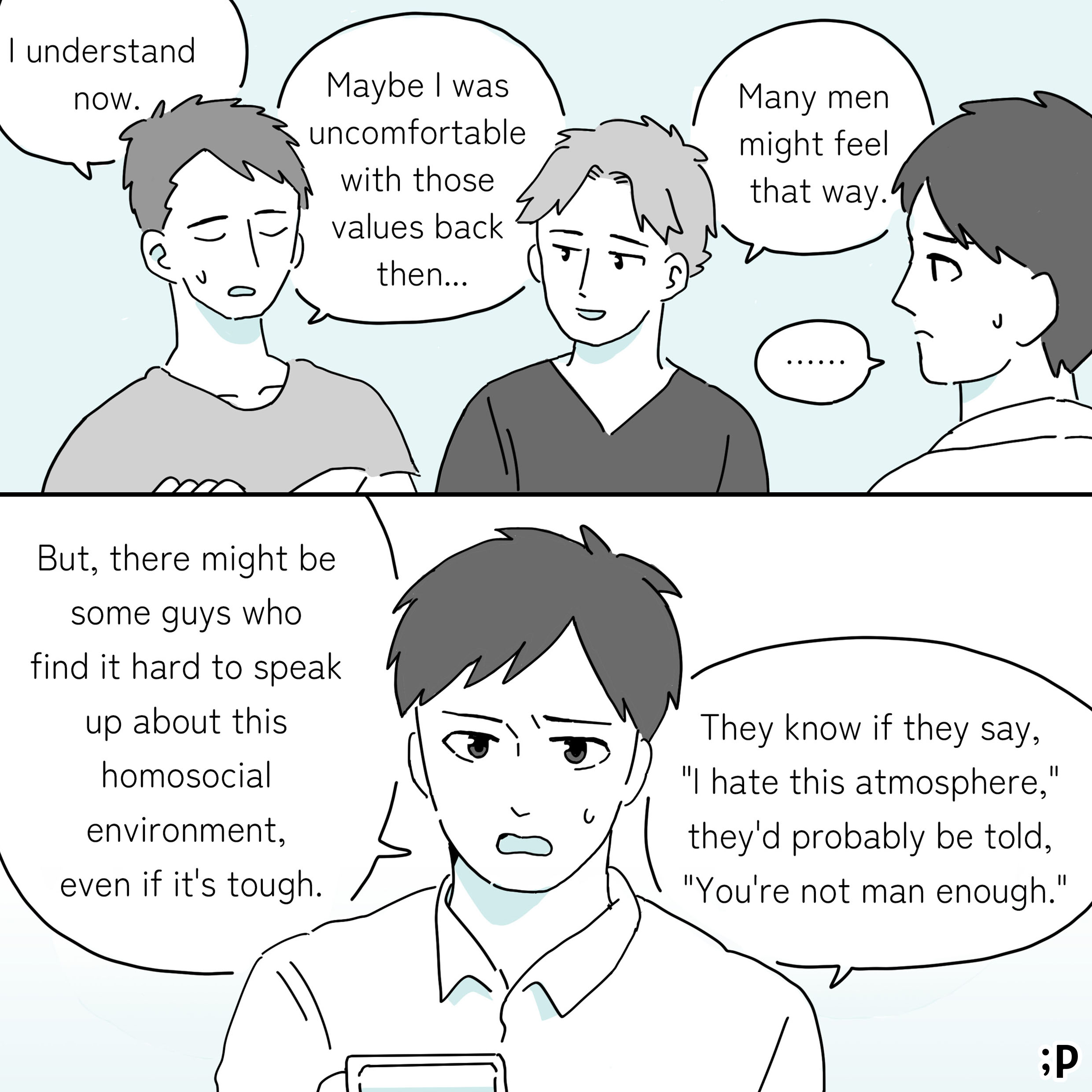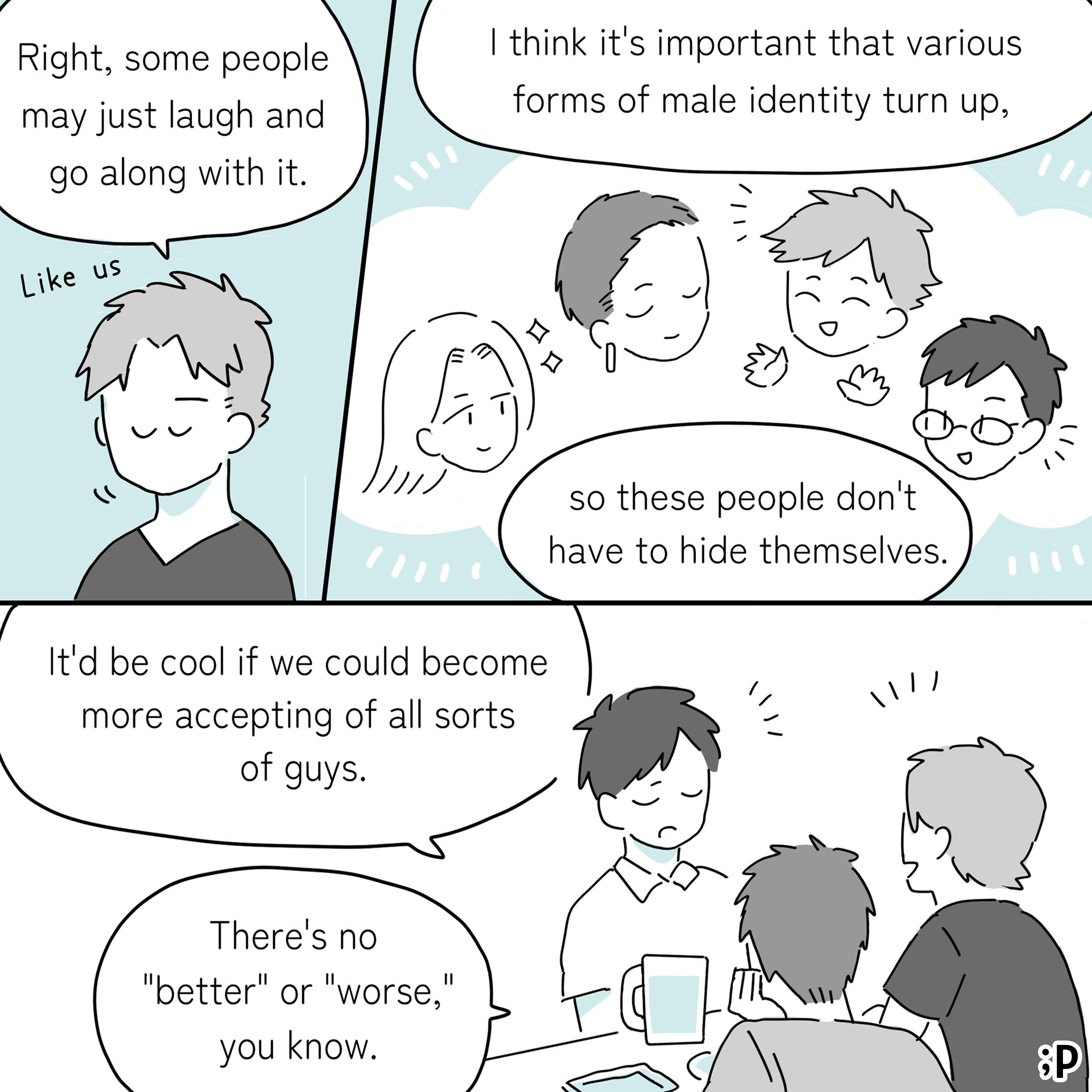【Manga】 What does “Homosocial” mean?Explaining “Male Bonding” and “Men’s Struggles”
In recent years, there has been a significant increase in attention to feminism and gender issues. While feminism and gender discussions have historically focused on women’s issues, there’s a growing movement to understand men’s struggles from the gender perspective.
You might have come across the term “homosocial” in this context.
Homosocial refers to “bonds or connections between people of the same sex that do not involve romantic or sexual aspects.” But what does it really mean, and how does homosociality relate to men’s struggles?
In this article, we’ll explore:
- The meaning of “homosocial.”
- Its relation to misogyny (disdain for women).
- Its connection with homophobia (dislike of same-sex relationships).
- How it relates to men’s challenges and harmful “masculinity.”
We’ll use manga to help explain the concept of homosociality in this context.
What does “Homosocial” mean?
Homosocial is a term that refers to “bonds and connections between people of the same sex that don’t involve romantic or sexual aspects.” It became widely known through the 1985 work “Between Men: English Literature and Male Homosocial Desire” by British literature researcher Eve Kosofsky Sedgwick.
The prefix “Homo” means “same” or “of the same kind” and has Greek origins. You can think of “homosocial” as describing relationships that emphasize the sameness or commonality between people of the same sex.
Homosociality is often associated with what’s commonly known as “male friendship and companionship.” At first glance, it might not seem to have negative connotations, but in reality, homosocial relationships can be associated with various issues.
Let’s look at some specific examples:
For instance, many men might have experienced the following:
- Being invited by superiors or colleagues to visit hostess bars or adult entertainment establishments but not wanting to go.
- Being teased or mocked because they’ve never been in a romantic relationship with the opposite sex.
- Finding it hard to admit liking things like bubble tea or sweet treats.
These situations are common in homosocial relationships.
The key point to take away from the definition of “homosocial” as “bonds and connections between people of the same sex that don’t involve romantic or sexual aspects” is that homosocial relationships often revolve around a shared concept of masculinity rooted in misogyny (disdain for women) and homophobia (dislike of same-sex relationships).
Homosocial and Misogyny
First of all, it’s important to understand that the concept of “homosocial” being about “bonds and connections between people of the same sex that don’t involve romantic or sexual aspects” also means that homosocial relationships often exclude women. In other words, it can be said that homosocial relationships emphasize the construction of masculinity, or what is commonly referred to as “manliness.” This is where misogyny comes into play.
Misogyny is the term for the disdain or hatred of women. It involves viewing someone as inferior just because they are a woman and looking down on things considered “feminine” or primarily done by women. Additionally, it can involve treating women not as equal individuals but as objects for sexual consumption. Various beliefs rooted in misogyny serve as standards for defining “manliness.”
Examples of “manliness” based on misogyny include:
- The objectification of women for sexual purposes.
- Valuing men with many sexual experiences with women as superior.
- Believing that things considered “feminine” are inferior.
These problems stem from not treating women as equal human beings but as means to prove one’s own heterosexuality or “manliness.”
In environments with strong homosocial dynamics, harassment or violence against women becomes more likely, and the hierarchy within male-male relationships is further reinforced based on these standards of “manliness.” This can result in many men feeling discomfort or unease within male communities.
Next up is…
Homosocial and Homophobia
Furthermore, the term “homosocial” being about relationships that don’t involve romance or sexuality means that in homosocial relationships, men are expected to be heterosexual. This is because “manliness,” which holds value in homosocial relationships, assumes heterosexuality. In other words, to form homosocial relationships among men, one often needs to emphasize their heterosexuality (that they are not homosexual).
To do this, two approaches are commonly taken: showing interest in women (heterosexuality) or making fun of gay individuals. Particularly, the latter approach is closely related to homophobia (dislike or hatred of homosexuality).
Aside from ridiculing men who are perceived to like “feminine” things (such as makeup or sweet treats), there’s a prevalent culture of using harassment remarks like:
“Are you gay or something?” – “No way, man, haha!”
These comments help maintain the assumption that “we can’t possibly be gay.” In homosocial relationships, the goal is to exclude any elements considered different or “other.”
Next up is…
The Challenges Men Face and Harmful “Masculinity”
Homosocial, rooted in misogyny (disdain for women) and homophobia (hatred of homosexuality). The concept of “masculinity” is centered around the idea of being a “heterosexual man with sexual desires.”
The drive to “share the same values and maintain relationships through homogeneity” essentially means excluding anything different. In an environment built upon the exclusion of women, homosexuals, and what’s perceived as “unmanly,” expressing discomfort with it becomes extremely difficult, even if you don’t resonate with the space or its values.
When you deviate from these “manly” norms, you are quickly labeled as “incomplete as a man.”
Of course, in reality, there is a diverse spectrum of men. In addition to what’s traditionally considered “masculine,” there are men who don’t drink, men who enjoy cooking or baking, men uncomfortable with being nude in public. Also, there are men who have same-sex attraction, men who have no sexual or romantic feelings, and also, men who view women as equals.
Surely, both you and those around you have many elements that can’t be fully expressed by the term “masculinity.” It’s impossible to measure someone’s value based on the standards of “masculinity.” It might be time to reconsider what is considered “masculine.”
Summary of the Meaning of “Homosocial”
In this article, we’ve discussed:
- The meaning of “homosocial”
- Its relation to misogyny (disdain for women)
- Its connection with homophobia (dislike of same-sex relationships)
- The challenges men face and the harmful aspects of “masculinity”
In recent years, there has been an increasing focus on the challenges that men face. When we examine one of the key factors behind these challenges, which is the homosocial value system, we find that it’s intricately intertwined with misogyny and homophobia.
It’s unfortunate that some people believe issues related to women’s rights or LGBTQ+ don’t concern heterosexual men. However, these problems affect everyone.
To create a society where everyone can live authentically without fear of exclusion, it’s essential to raise awareness of homosocial values and break them down one by one.
(Translation: Jennifer Martin)

